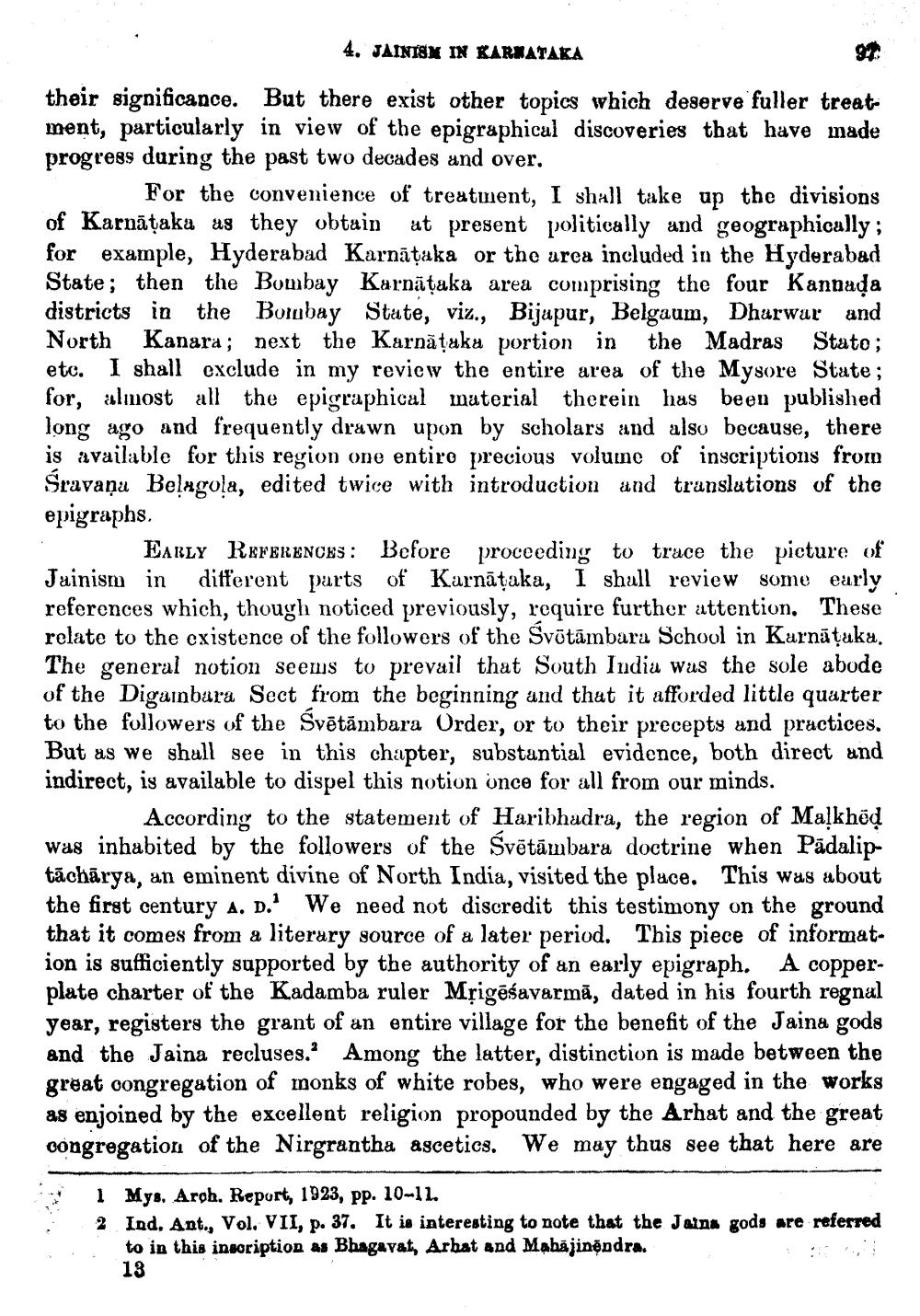________________
4. JAINISM IN KARNATAKA
their significance. But there exist other topics which deserve fuller treatment, particularly in view of the epigraphical discoveries that have made progress during the past two decades and over.
For the convenience of treatment, I shall take up the divisions of Karnataka as they obtain at present politically and geographically; for example, Hyderabad Karnataka or the area included in the Hyderabad State; then the Bombay Karnataka area comprising the four Kannada districts in the Bombay State, viz., Bijapur, Belgaum, Dharwar and North Kanara; next the Karnataka portion in the Madras Stato; etc. I shall exclude in my review the entire area of the Mysore State; for, almost all the epigraphical material therein has been published long ago and frequently drawn upon by scholars and also because, there is available for this region one entire precious volume of inscriptions from Śravana Belagola, edited twice with introduction and translations of the epigraphs.
EARLY REFERENCES: Before proceeding to trace the picture of Jainism in different parts of Karnataka, I shall review some early references which, though noticed previously, require further attention. These relate to the existence of the followers of the Svötambara School in Karnataka. The general notion seems to prevail that South India was the sole abode of the Digambara Sect from the beginning and that it afforded little quarter to the followers of the Svētambara Order, or to their precepts and practices. But as we shall see in this chapter, substantial evidence, both direct and indirect, is available to dispel this notion once for all from our minds.
According to the statement of Haribhadra, the region of Malkhed was inhabited by the followers of the Svētambara doctrine when Padaliptacharya, an eminent divine of North India, visited the place. This was about the first century A. D. We need not discredit this testimony on the ground that it comes from a literary source of a later period. This piece of information is sufficiently supported by the authority of an early epigraph. A copperplate charter of the Kadamba ruler Mrigēśavarma, dated in his fourth regnal year, registers the grant of an entire village for the benefit of the Jaina gods and the Jaina recluses. Among the latter, distinction is made between the great congregation of monks of white robes, who were engaged in the works as enjoined by the excellent religion propounded by the Arhat and the great congregation of the Nirgrantha ascetics. We may thus see that here are
1 Mys. Arch. Report, 1923, pp. 10-11.
2 Ind. Ant., Vol. VII, p. 37. It is interesting to note that the Jaina gods are referred to in this inscription as Bhagavat, Arhat and Mahājinëndra.
13




